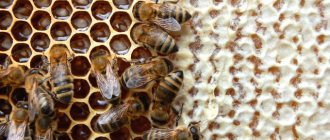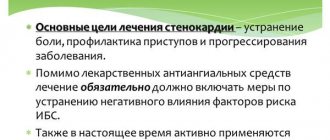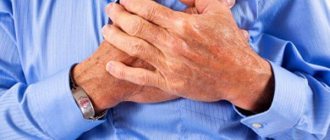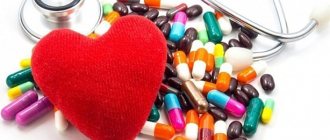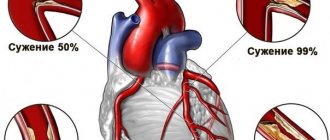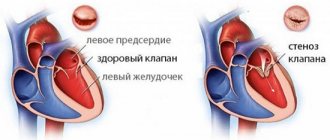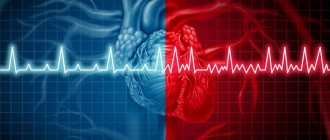Should angina pectoris be treated at home?
Angina pectoris is a disease caused by insufficient blood supply to the heart, which develops due to excessive cholesterol deposits on the walls of the arteries. Due to such complications, there is a high risk of an attack, accompanied by pain in the chest, nausea and vomiting, which contributes to difficulty breathing and weakening of the body.
If you ignore the need to treat angina, coronary heart disease (CHD) may develop.
Not all people have the opportunity to constantly go to the hospital to receive recommendations and prescriptions that will help cope with pathology. To achieve results in the fight against the disease, you need to act independently - at home.
In addition to the preventive measures prescribed by the doctor, it is important to consider: what medications can be used, how effective folk remedies are for relieving symptoms, what to take in case of serious manifestations of pathology - all this will help avoid deterioration of health and cope with angina.
We approach these methods wisely
Folk remedies used at home help not only relieve an attack, but also drive away “angina pectoris” forever. Especially in the first stages of the disease. If the disease has become chronic, they supplement traditional medicine prescribed by the doctor.
It is imperative to see a doctor if you have angina pectoris: if left untreated, there is a high chance of “getting sick” to myocardial infarction.
However, folk remedies must be used wisely. It’s even better to consult with professionals. Some herbal teas become unsafe if overdosed. Apitherapy and honey formulations can lead to severe allergic reactions.
Some medicinal plants greatly increase blood pressure . These are adaptogens: aralia and ginseng, eleutherococcus and golden root. Chinese lemongrass is especially trying. The volume of such herbs in collections needs to be reduced.
There is another danger: getting carried away with traditional medicine, throwing away conventional medicines and causing the disease . This is why medical supervision is needed.
How to treat angina at home?
In total, there are two options with which you can get rid of diseases. The first method involves surgery, the essence of which is to operate on blood vessels to increase blood flow. Obviously, it is not suitable for home treatment.
The second option, more traditional, involves drug therapy. In this case, drugs are used whose properties can reduce the myocardial oxygen demand - the characteristics of the drugs are aimed at reducing heart rate.
When treating yourself, you also need to remember a number of important recommendations that will help prevent the development of pathology and cope with the disease:
- Avoid excessive physical activity.
- Prevent stress and emotional turmoil.
- Do not overwork, wisely distributing time for work and rest.
- Get rid of bad habits. For example, smoking contributes to worsening health conditions, because nicotine has a negative effect on blood vessels.
It is also important to maintain a healthy diet, ensuring that you eat balanced meals regularly, as excess weight can trigger an attack.
Causes of angina development
At the initial stage of development of coronary insufficiency, angina appears quite rarely, provoked by severe physical exertion or stress. But over time, the frequency of attacks begins to increase as their duration increases. When the disease becomes severe, pain occurs even at rest.
The danger of the disease is that it can provoke the development of myocardial infarction. Therefore, its symptoms should never be ignored.
Before you begin treating angina with the most effective traditional methods, it is necessary to understand the mechanisms of development of the disease. This pathology can manifest itself for two types of reasons:
- immutable, which cannot be eliminated;
- modifiable, which can be eliminated, avoiding the development of the disease.
The unchangeable factors are:
- Age. If previously it was believed that people aged 50-60 years were at risk for this disease, today the pathology is detected in people under forty years of age. If constant stressful situations and nervous tension occur, ischemia and subsequent infarction of the heart muscle can develop in twenty-year-old people.
- Hereditary. If close relatives of the patient suffered from this disease, then it is highly likely that he will develop it too. Angina pectoris very often occurs as a result of previous chronic diseases - these are heart defects, rapid heartbeat, and heart attack.
Variable causes of the disease are as follows:
- Lack of normal physical activity. Due to numerous tests, scientists were able to establish that the more training the myocardium endures, the less likely it is to develop this disease.
- Poor nutrition, namely, consumption of smoked, salted, fried, and other heavy foods, not only worsens the functionality of the cardiovascular and digestive systems, but also negatively affects the functioning of the entire body as a whole.
- Alcohol and smoking abuse. If you have heart problems, you need to give up these bad habits.
- Obesity. If you have a small amount of excess weight, a balanced diet and exercise will help you correct it. If the patient’s weight significantly exceeds the norm, then complex treatment methods should be used to prevent angina pectoris.
- Hypertension. The development of the disease has an extremely negative impact on the condition of the blood vessels. Prevention of the disease involves a balanced diet, increased physical activity, and quitting smoking and alcohol. All this is accompanied by appropriate drug treatment.
- Stress. Scientists believe that happy, optimistic people are least likely to develop angina. Those at risk include people with a depressive character and those experiencing serious emotional upheaval and nervous tension.
- Chronic diseases. Some diseases can negatively affect the cardiovascular system. The development of angina pectoris can occur as a result of diabetes mellitus.
To prevent the disease, it is very important to maintain a healthy lifestyle. We are talking about moderate physical activity, diet, sleep patterns and giving up bad habits.
What medications should I take?
Drug therapy for the treatment of angina includes the following drugs:
- Nitrates
. To relieve pain and reduce stress on the cardiovascular system, Nitroglycerin tablets are used, which are placed under the tongue. - Beta blockers
. By reducing the load on the heart, it is possible to limit the area of the heart muscles that can be affected by an attack. Beta blockers help slow the heart rate, which helps the organ work without requiring additional resources. - Anticoagulants
. Used to prevent the formation of additional blood clots. As an example - Heparin. - Calcium channel blockers
. They help prevent narrowing of blood vessels and provide relief from coronary artery spasm. Verapamil and Diltiazem additionally help reduce heart rate. Recommended for use if there are contraindications to beta blockers or if there is no effect from nitrates.
It is also worth noting Ranolazine, which is prescribed to patients with persistent symptoms if other antianginal drugs do not help. Moreover, this remedy is more effective for women than for men.
Combined folk recipes
Effective treatment of angina at home involves the use of remedies that combine the preparation methods described above. The most popular among them are:
- 500 g of honey is poured into 0.5 liters of vodka and heated on the stove until a homogeneous mass is obtained. The mixture is then cooled. At the same time, you need to boil a liter of water, after which it is poured with a mixture of knotweed herbs, valerian root, marsh grass, chamomile and motherwort (you need to take a tablespoon of each herb). Leave for exactly one hour, after which the previously prepared mixture is poured into the infusion and mixed. The final product must be kept in a dark place for a week. Take a tablespoon twice a day.
- Squeeze the juice from the garlic head (large), add a glass of Cahors and half a teaspoon of salt. Take a tablespoon at night. The course of treatment is a month. Over the course of a year, you need to carry out two courses of treatment for angina pectoris at home.
The high effectiveness of traditional methods in the treatment of heart diseases has been proven more than once in practice. This is evidenced by numerous positive reviews about the treatment of angina pectoris with folk remedies. But the best result is ensured if the use of infusions, tinctures and herbal preparations is combined with taking tablets prescribed by a specialist.
Before treating angina pectoris with folk remedies, you need to have an accurate diagnosis. Therefore, you should not self-medicate - in case of any interruptions in the functioning of the heart, you must contact a specialist who will diagnose and determine the further course of treatment. Only in this way can you finally get rid of the disease.
How to treat unstable angina?
Unstable angina according to the Braunwald classification is the most dangerous period of the disease, during which the risk of developing coronary artery disease is high. Therefore, its treatment needs to be given more attention, observing the following requirements:
- adhere to strict bed rest;
- use medications to relieve pain;
- take medications to stabilize the heart rhythm.
As with stable angina, in the case of non-standard angina it also makes sense to use nitrates. They will help cope with pain symptoms without having a negative impact on blood pressure and pulse.
Medicines are also used, the purpose of which is to reduce the organ’s need for oxygen, that is, beta blockers. Due to them, blood vessels dilate and the heartbeat slows down.
To eliminate blood clots, the patient should take blood thinners. Disaggregants are suitable for this purpose. They inhibit the ability of platelets to stick together, which prevents the formation of blood clots.
Also, the course of treatment must include proper nutrition, the requirements of which are as follows:
- Eliminate fatty, salty or smoked foods from the menu. Can only be steamed or boiled.
- I'll have to give up sweets.
- Alcohol, especially strong alcohol, can negate all treatment, so drinking such drinks during periods of unstable angina is prohibited.
The daily diet should be “green” - a maximum of vegetables, fruits, cereals and fiber.
The best diet for angina pectoris
If angina is diagnosed, it is recommended to consume the following foods:
- Fruits, vegetables and whole grain baked goods.
- Light proteins such as skinless chicken, fish and beans.
- Low-fat or low-fat dairy products, such as low-fat yogurt, low-fat cottage cheese, or skim milk
It is also advisable to avoid or limit:
- Salty or high sodium foods.
- Foods that contain saturated or hydrogenated fats, such as French fries, canned goods, and baked delicacies
- Cheese, cream and eggs.
- Alcohol.
In addition to making these dietary changes, following tips to prevent relapses of the disease will help you manage your angina successfully.
Prevention Tips
- You need to maintain physical activity and try to regularly engage in non-professional sports.
- Avoid engaging in activities or exercises that worsen chest pain.
- You need to quit smoking.
- The practice of yoga and meditation is useful.
- It is important to monitor your stress levels.
- You should get enough rest and sleep.
There is always a risk of developing angina in the form of a heart attack. Therefore, it is highly undesirable to delay treatment. You should also seek medical help promptly when the first signs of illness appear.
Folk remedies for internal use
Traditional medicine includes many quite effective options that can help in the fight against angina:
| What do you need | How to cook | How to use |
| hawthorn flowers and sweet clover herb; lemon balm and meadowsweet grass; yarrow grass, oat straw, annual immortelle. In a ratio of 1.5:1:0.5. | 1. Pour 6 grams of herbal mixture with 300 milliliters of water. 2. Heat in a water bath for 10 minutes. 3. Leave to brew for one hour. 4. Strain. | A third of a glass half an hour before meals three times a day. |
| rhizome of valerian officinalis; sweet clover grass; peppermint; corn silk. In a 1:1 ratio. | 1. Grind 5 grams of herbal mixture to a powder. 2. Pour 300 milliliters of boiling water. 3. Leave for 4 hours. It is recommended to use a thermos. | A third of a glass a quarter of an hour after meals three times a day. The last dose is no later than an hour before going to bed. |
| astragalus densely flowered, hawthorn fruits, wild strawberry leaves, horse chestnut flowers; dill fruit, buckwheat flower, chicory root, shepherd's purse herb, rose hips. In a 2:1 ratio. | 1. Grind 8 grams of herbs to a powder. 2. Pour 300 milliliters of boiling water. 3. Place in a warm place and leave for an hour. 4. Strain. | A third of a glass half an hour after meals, five times a day. |
In addition to the above recipes, there are other folk remedies that you can even choose according to your taste.
Will garlic help?
Garlic in folk medicine has long been overgrown with myths that have elevated this product almost to the rank of a panacea.
However, most of the attributed properties are not true.
And yet, garlic can be quite effective in the fight against angina, as it helps cope with atherosclerosis and cholesterol plaques. The cooking recipes are as follows:
- Turn 250 grams of garlic into a paste and mix with 250 grams of honey. Place the resulting mixture in an airtight container and leave for a week. The medication should be taken three times every day, half an hour before meals. Volume - one tablespoon.
- Chicken broth is healthy on its own, but it needs to be used together with garlic to achieve greater benefits. After pouring 10-15 cloves of vegetable into two glasses of liquid, you need to boil the mixture for 15 minutes, adding 50 grams of parsley three minutes before the end. Grind the garlic through a fine sieve and mix again with the broth. Drink half an hour before meals. Volume - 75 milliliters.
Recipes can also be combined. For example, pour a little lemon juice into the honey-garlic mixture, which will increase the healing properties of the folk remedy. To maintain the proportions, you will need 10 fruits, the same number of heads of garlic (it is better to choose larger ones) and 1 kilogram of honey. Volume: 3 teaspoons once a day. It is recommended to take a break of at least one minute between doses.
Treatment of angina pectoris with folk remedies at home
List of home remedies to treat angina naturally:
- Essential oils.
- Garlic.
- Ginger.
- Lemon juice.
- Onion juice.
- Beetroot juice.
- Vitamins.
- Cayenne pepper.
- Honey.
Essential oils
- Lavender oil
You will need: 1-2 drops of lavender oil, cloth (napkin). Application: apply one or two drops of lavender oil to a piece of cloth (napkin). The soothing aroma is inhaled from time to time. You can also add 10 drops of lavender essential oil to the bath and soak in it for a while. This procedure can be done once a day, which will reduce the impact of the stress factor.
Why does this work? One of the main factors causing heart problems is emotional overstimulation. Inhaling lavender essential oil is known to reduce stress and anxiety. This, in turn, helps dilate blood vessels.
- Rosemary oil
You will need: 6-10 drops of rosemary oil, diffuser (optional), water. Application: add a few drops of rosemary oil to the bath, which is taken for 20-30 minutes. You can also add about three drops of rosemary oil to a diffuser filled with water. The released aroma is inhaled for 5-10 minutes. This procedure should be done once a day.
Why does this work? Rosemary essential oil helps relieve angina and other heart conditions in two ways. First, the level of cortisol, which protects the body from oxidative stress, decreases. Secondly, blood flow to the heart improves by dilating blood vessels.
Garlic
You will need: 2-3 cloves of peeled garlic. Application: every morning you need to chew two or three cloves of peeled garlic. The frequency of taking the drug is once a day on an empty stomach.
Why does this work? Garlic copes well with cardiovascular diseases, including unstable angina. It is known to increase the elasticity of blood vessels and capillaries. This can help with angina and lower blood pressure.
Ginger
You will need: 1 teaspoon of grated ginger, 1 glass of water. Directions: Add a teaspoon of grated ginger to a cup of water. Bring to a boil in a saucepan and then simmer. Strain and let the mixture cool slightly. Consume the drink warm. You can also simply chew a small piece of ginger. You need to take this folk medicine at least twice a day to achieve the desired effect.
Why does this work? Ginger contains a compound called gingerol, which is known to help normalize high cholesterol levels. As a result, blockage of blood vessels by thrombotic clots is prevented. Consuming ginger can lower cholesterol levels, and its antioxidant activity helps fight cellular oxidation.
Lemon juice
You will need: 1⁄2 lemon, 1 tablespoon honey, 1 glass of warm water. Application : squeeze the juice from half a lemon and mix with a glass of warm water. Add a little honey. Drink immediately. Use this folk remedy once a day on an empty stomach.
Why does this work? Oxidation of cells in the body can cause the formation of plaque in the arteries (usually atherosclerotic), which later becomes a major cause of angina and heart attacks. The antioxidant properties of lemon can lower cholesterol levels and prevent cellular oxidation.
Onion juice
You will need : 1⁄2 onions, honey Application: chop half the onion and extract the juice from it. Mix a teaspoon of juice with honey and drink. This product should be used once every morning, preferably on an empty stomach.
Why does this work? Onion juice contains a compound called quercetin, which is known for its cholesterol-lowering properties. It may also help reduce the severity of atherosclerosis, or plaque formation in the arteries, which is the main cause of angina.
Beet juice
You will need: 1 glass of freshly squeezed beet juice. Application: drink a glass of freshly squeezed beet juice approximately twice a day.
Why does this work? Beet juice contains nitrates. When a person exercises, these nitrates are converted into nitric oxide. It helps the cardiovascular system in a variety of ways, including relieving angina symptoms.
Cayenne pepper
You will need: 1⁄2 teaspoon ground cayenne pepper, 1 glass of warm water, 1 tablespoon of honey. Directions: Add half a teaspoon of ground cayenne pepper to a glass of warm water. Mix well and add a tablespoon of honey to the mixture. Use the product once a day, preferably every morning.
Why does this work? The active ingredient in cayenne pepper is capsaicin. This compound has impressive pain-relieving properties and also promotes heart health by lowering cholesterol levels, reducing the severity of atherosclerosis and obesity. All this makes cayenne pepper useful in the treatment of angina pectoris with folk remedies.
Honey
You will need: 1-2 teaspoons of natural honey. Application: consume one to two teaspoons of honey once a day.
Why does this work? Honey and its polyphenols are great for improving heart health. They help dilate blood vessels with their vasodilatory properties and also prevent intravascular coagulation. This, in turn, is the prevention of diseases such as angina pectoris.
Vitamins
Low plasma levels of vitamins E and C are known to increase the risk of angina in humans. Therefore, the deficiency of these substances must be corrected by consuming foods such as citrus fruits, leafy vegetables, bell peppers, almonds, hazelnuts and sunflower seeds. You can also take these vitamins in supplement form (if required), but only after medical advice.
Folk remedies for external use
In addition to various decoctions, solutions, teas and other medicinal drinks, you need to pay attention to traditional medicine products that are intended for external use. The first recommended option is fir oil when experiencing or preventing an attack of angina. Using it is quite simple - you need to rub 2-3 drops of the substance into the heart area. The procedure must be carried out at least 3 times a day. A greater effect from fir oil is observed when the patient is dependent on sudden changes in atmospheric pressure.
Peppermint oil, the components of which are also used to make medicinal drinks, can also be useful. You need to rub the substance into the temple area - at least 2 times a day.
The older a person is, the more complete his medical history is, so it is not uncommon for other pathologies with the cardiovascular system to develop against the background of angina.
Massaging your fingers can help prevent their rapid growth. For example, to achieve a stable heart rhythm, you should gently treat your little finger.
If a tingling sensation occurs in the area of the affected organ, you need to clasp your left wrist with your thumb and forefinger and massage this area with measured circular movements.
How to relieve an attack and overcome symptoms with folk remedies
Attacks of coronary artery disease are usually accompanied by pressing pain in the chest, radiating to the left shoulder, neck area, and even to the jaw. It can happen during physical activity or a stressful situation. The pain is relieved with a glycerin tablet .
But there are also non-drug home ways to relieve an attack. A common one is to swallow a clove of garlic whole. If the pain is severe, rubbing fir oil into the heart area will help. Or put mustard plaster in this place and cans on the back.
Some people use a more pleasant method to relieve an attack: 20 grams of cognac with sugar. Alcohol will dilate the coronary vessels and have a relaxing effect.
How will breathing exercises help?
Breathing training can improve blood flow, reducing the risk of developing diseases. Therefore, if you want to get rid of angina pectoris at home, gymnastics can rightfully be considered one of the first measures that need to be taken for successful treatment.
In addition to the fact that breathing exercises can improve blood microcirculation by dilating blood vessels, they also increase the delivery of oxygen to organs and ensure its unhindered flow to important tissues of the human body. This reduces the load on the myocardium, which helps reduce the risk of attacks. The main recommendations for implementation are as follows:
- position - the back is straight, nothing presses on the chest;
- breathe deeply, slowly, measuredly;
- one of the classes should be based on the principle of delay in the “inhale-exhale” cycle.
Gymnastics can include various exercises - there are many named techniques.
Training should be done on a regular basis over several weeks.
This is the only way to achieve the desired effect, which will become noticeable 3-4 months after the start of the exercises.
Changing the home kitchen
The first thing you can do at home to prevent attacks and complete recovery is to change your diet. You will have to give up the following foods:
- rich broths;
- smoked meats;
- fried meat and fish;
- fatty deli meats and sausages;
- muffins and cream cakes;
- hot spices.
The consumption of sugar and salt should also be reduced.
The menu for treating angina pectoris at home should include:
- legumes (peas, beans, soybeans);
- seafood;
- mushrooms;
- vegetable oil;
- vegetables;
- fruits.
The recommended meat product is liver, preferably veal . It’s not a bad idea to treat yourself to hematogen.
This video tells more about traditional treatment and nutritional rules for this disease:
There is also a homemade delicacy that is useful for angina pectoris . You need to grind raisins, prunes, dried apricots, walnut kernels in a blender and pour liquid honey over the crumbs. Add lemon slices to the mixture (one fruit per kilogram).
What to do if you have an angina attack?
The patient’s condition largely depends on the correctness of the actions taken during an attack. To prevent the development of pathology and achieve its successful cure, you need to act as follows:
- Try to calm down and take a sitting position. This will reduce tension in the heart and reduce the degree of oxygen starvation.
- Place a Nitroglycerin tablet under the tongue if the signs of angina do not go away and the pain does not decrease. The product should help within 5 minutes. The maximum number of tablets per attack is no more than three. Otherwise, there is a high risk of excessive pressure reduction, which can lead to loss of consciousness. Additionally, you should take aspirin, since nitroglycerin causes severe pain in the head.
- If the attack drags on, you need to widen the collar so that nothing restricts your throat, and raise your head. It is also necessary to open the window so that air can freely enter the room.
- To reduce the feeling of fear and panic that often occurs when an attack occurs and worsens its symptoms, you need to drink a sedative.
If you managed to cope with the crisis without the involvement of outside help, any physical stress or moral shock should be excluded in the near future. Also, do not forget about taking medications to treat angina pectoris.
Symptoms and causes
Angina pectoris, or from lat. Angina Pectoris begins with a slight pressing pain, which gradually develops into a sensation radiating to the shoulder and arm. Such symptoms occur due to narrowing of the coronary arteries, which impairs blood circulation and causes spasms.
Regardless of the classification of the disease, the symptoms of both stable and unstable angina are the same:
- The patient's skin color becomes pale, and swelling of the face appears;
- Cold sweat appears, body temperature drops (to 34-35 degrees);
- As the temperature drops, the body goes numb. A person in an attack cannot warm his limbs;
- Shortness of breath appears, breathing is difficult. Feeling as if there is not enough oxygen. This symptom is often described as “suffocation,” when breathing is intercepted not only in the chest area, but also in the throat.
We recommend reading: Microstroke
Causes of the disease:
- Nervousness, central nervous system disorder, constant stress, overwork;
- Frequent hypothermia;
- Physical exercise;
- Pathologies and anomalies of the heart (defects, prolapse);
- Vascular/arterial thrombus, lack of oxygen in the blood (vegetative-vascular dystonia);
- Hypertension, hypotension.
Glaucoma: treatment with folk remedies.
How to treat cardiac bradycardia, read this article.
Learn more about folk remedies that will help with high blood pressure.
Causes of the disease
All causes of myocardial malnutrition are associated with a decrease in the diameter of the coronary vessels, these include:
- Hypertension - an increase in systemic blood pressure in the vessels above normal causes spasm (narrowing) of the coronary vessels.
- Atherosclerosis of the coronary vessels is the most common cause of myocardial ischemia, in which cholesterol is deposited on the walls of the arteries, leading to a narrowing of their lumen. In the future, atherosclerosis can be complicated by myocardial infarction (death of part of the heart muscle due to complete blockage of the artery by a thrombus).
- Tachycardia is an increase in heart rate, which causes an increase in the muscles' need for oxygen and nutrients, while the coronary vessels do not always cope with their adequate supply.
- Infectious pathology of the coronary arteries is endarteritis, in which the lumen of the vessels narrows due to their inflammation.
An attack of angina pectoris is provoked by a number of factors that increase the myocardial need for nutrients and oxygen:
- physical exercise;
- stress and emotions;
- a sharp increase in blood pressure;
- changes in ambient temperature.
Differences between angina and myocardial infarction
This disease is often confused with myocardial infarction. It is worth knowing that these diseases have significant differences. What is the difference between these pathologies?
An attack of angina pectoris manifests itself in the absence of oxygen in the heart, due to narrowing of the coronary arteries. When the patient's activity decreases and there is no stress, the pain quickly passes.
When a heart attack develops, the heart muscle is completely deprived of blood and oxygen as a result of blockage of the arteries by thrombosis. This pathology is accompanied by rare and severe pain due to the fact that the damage to the arteries is significant.
Important: an attack of angina is dangerous to health, since if left untreated, coronary heart disease takes a severe form, which develops myocardial infarction. What to do in this case? Immediately consult a doctor who will prescribe treatment and reduce the duration of development of the pathology.
